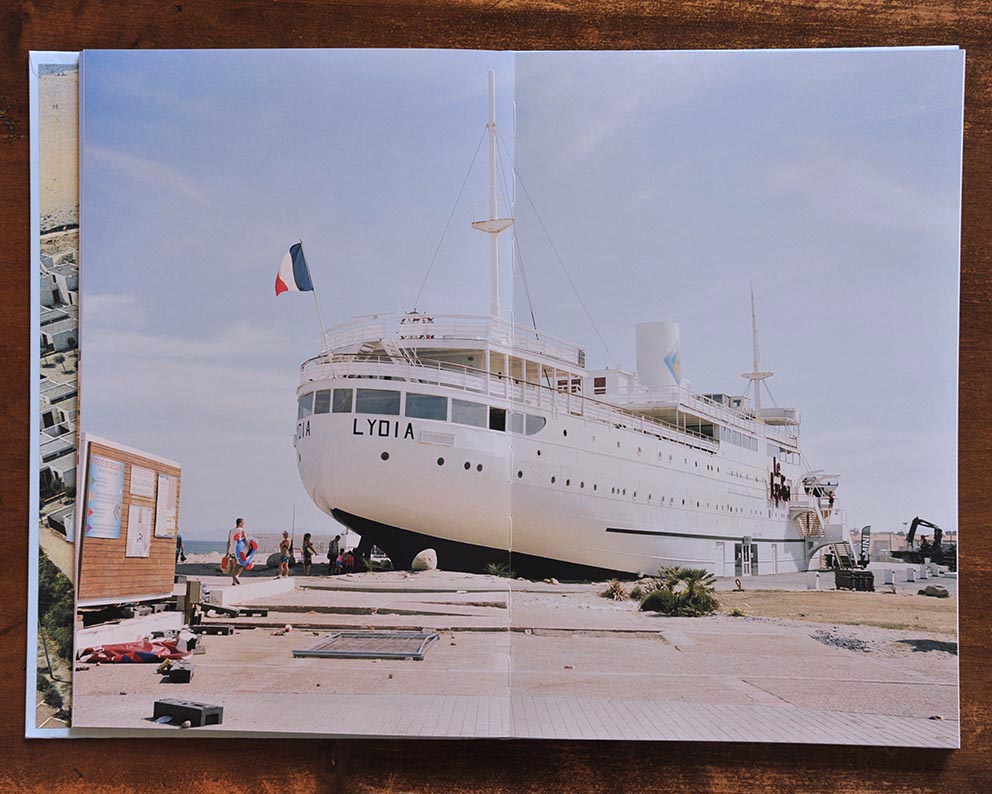Vincen Beeckman, activist photographer
Posted: January 9, 2022 Filed under: Photobooks, Photography | Tags: Belgian photography, photobooks, Vincen Beeckman Leave a commentYou may already know that I am a fan of Belgian photography, but today, I would like to focus on one of them whose work I particularly love, I mean Vincen Beeckman.
The first time I have heard about him was years ago, when he was in charge of Recycl’Art, an art center which was located in the former train station of Bruxelles Chapelle. The center is now closed, but it was a wonderful place with exhibitions, workshops, happening and a very good restaurant.
In 2017, he started a touring exhibition of Belgian photographers in many small boxes which aim was to be representative of the Belgian photography scene, and called it first “Musée de la Photographie”. After a troubled period with a conflict with the already existing museum in Charleroi, the name turned to the “Fusée de la Motographie”.
During the time he worked at Recycl’Art, he took a lot of care and attention the people from minorities, like migrants, homeless, refugees.. and this is this strong empathy for the humankind that we find in all his published books.
Here below, you can find different books he made, from my own shelves.
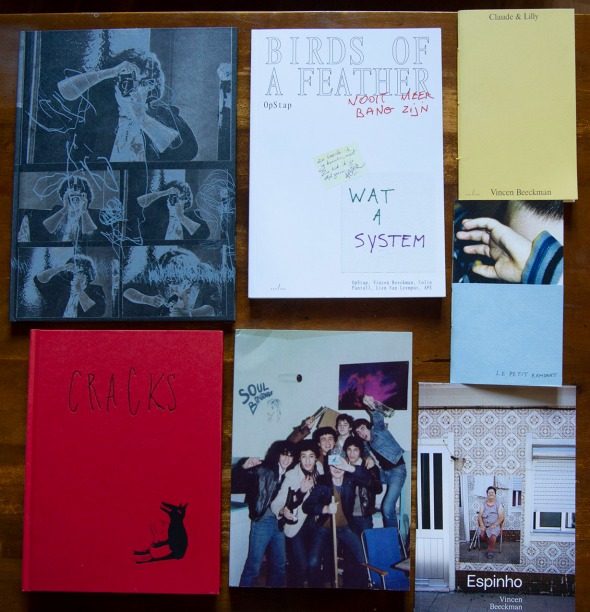
Claude & Lilly, a true love story between the two characters shot by Vincen from 2015 to 2018. Published in March 2019 by APE in an edition of 500 copies.




Filip – Anneessens. One day, Vincen was given archives photographs from the time when the Father Philippe took in charge teenagers in the Bruxelles area of Anneessens. These photographs show the daily life of those teenagers, through their activities and also travels, like to Ostende, Paris or Spain. Published in December 2019 by Recycl’Art in an edition of 250 copies.





Le Petit Rempart is a small booklet of photographs from February 2019 to February 2020 made in the emergency shelter of “Le Petit Rempart”. With tenderness, we meet all those people who spent some time in the structure. Published by Camille Carbonaro in an edition of 100 copies.


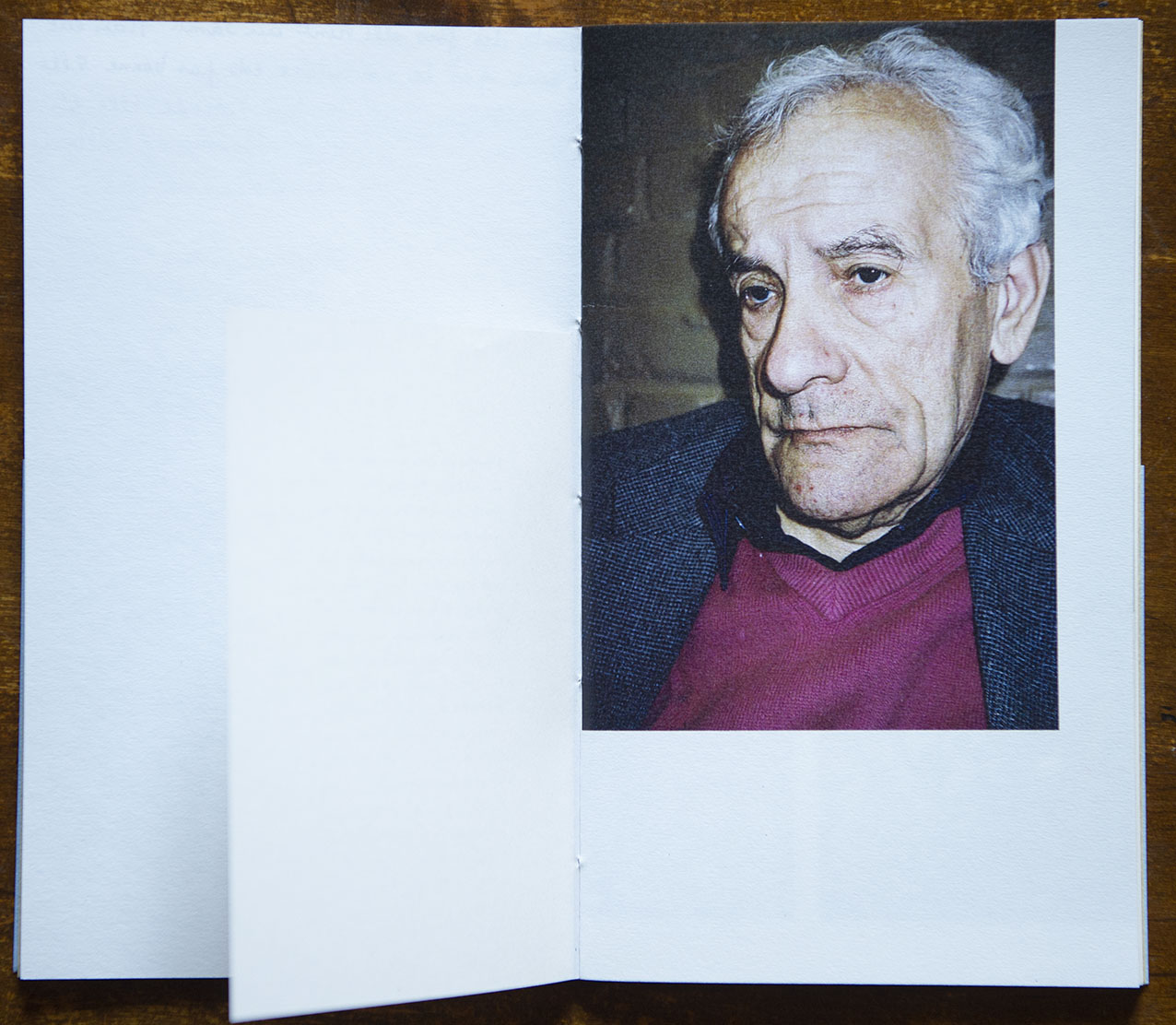

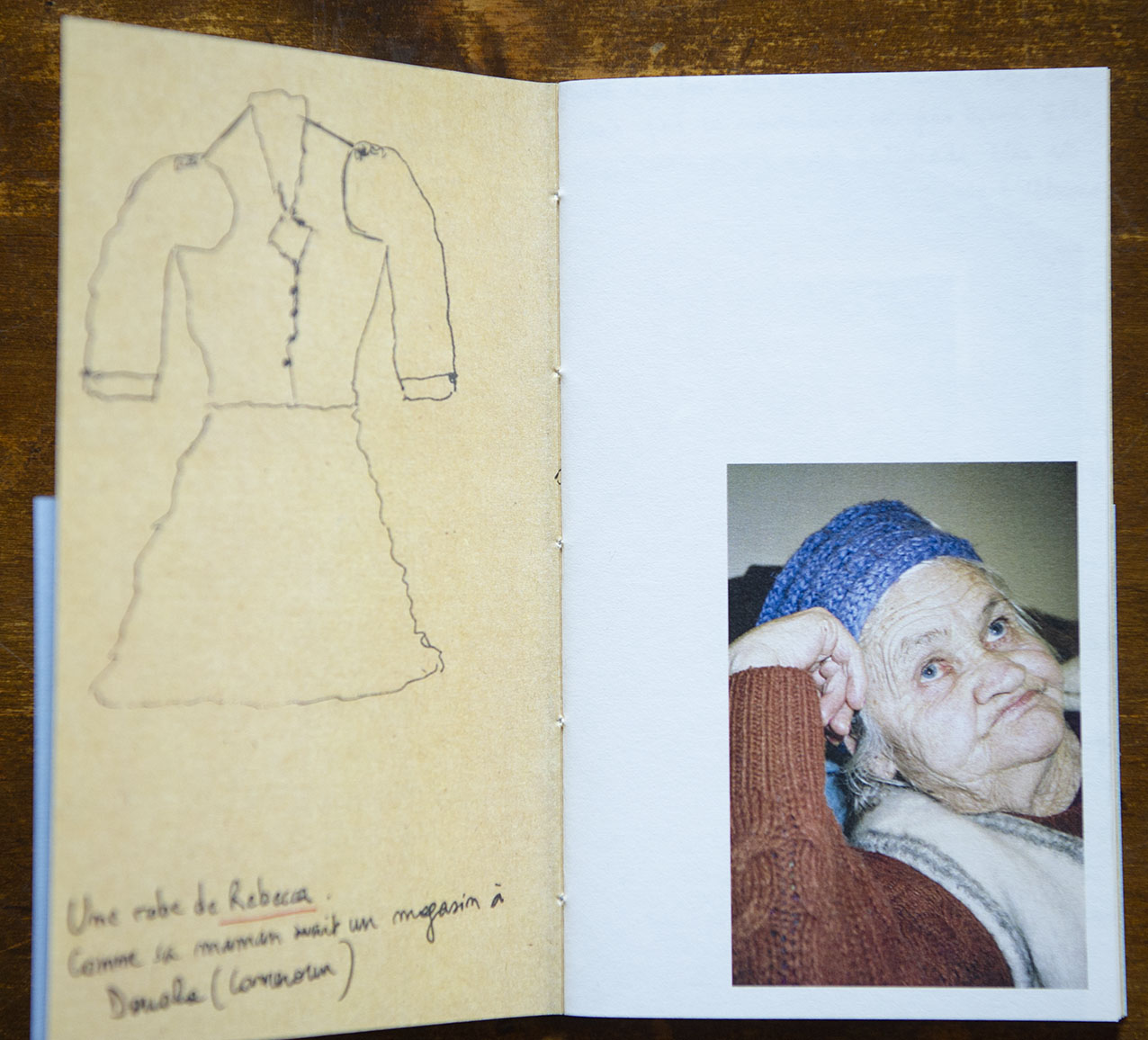
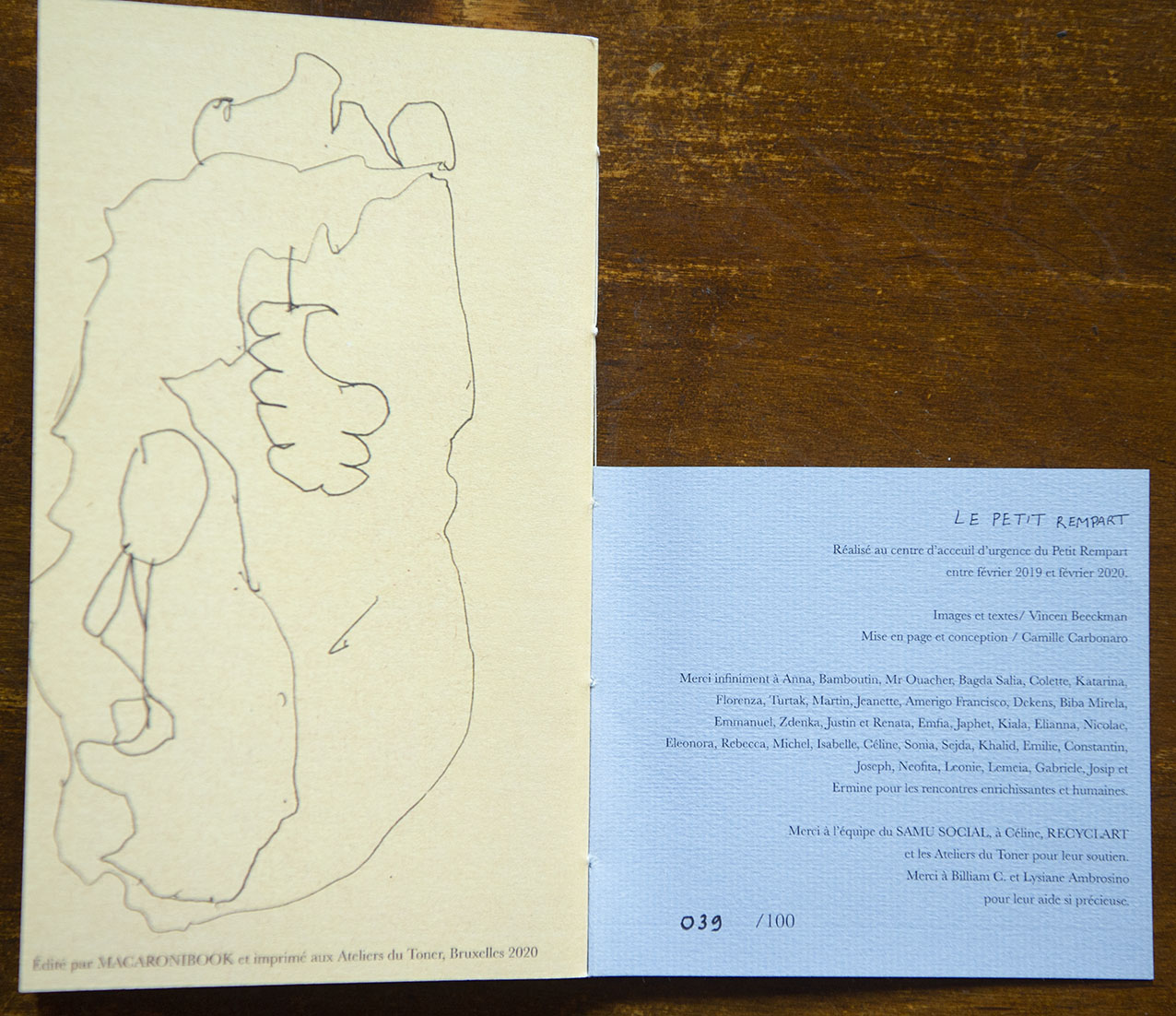
Cracks is one of my absolute favorite. For this project, Vincen gave disposable cameras to homeless people in Bruxelles, more or less around the central Station, to witness their daily life. He then did the editing of the photographs and the book was published in 2019 by VOID in an edition of 250 copies with a specific particularity if you want a copy. The book was not available in bookstores, but only by a direct contact with the homeless people. You need to call them to organize an appointment to meet them and pay the book in cash. It creates a strange, but really true relationship.
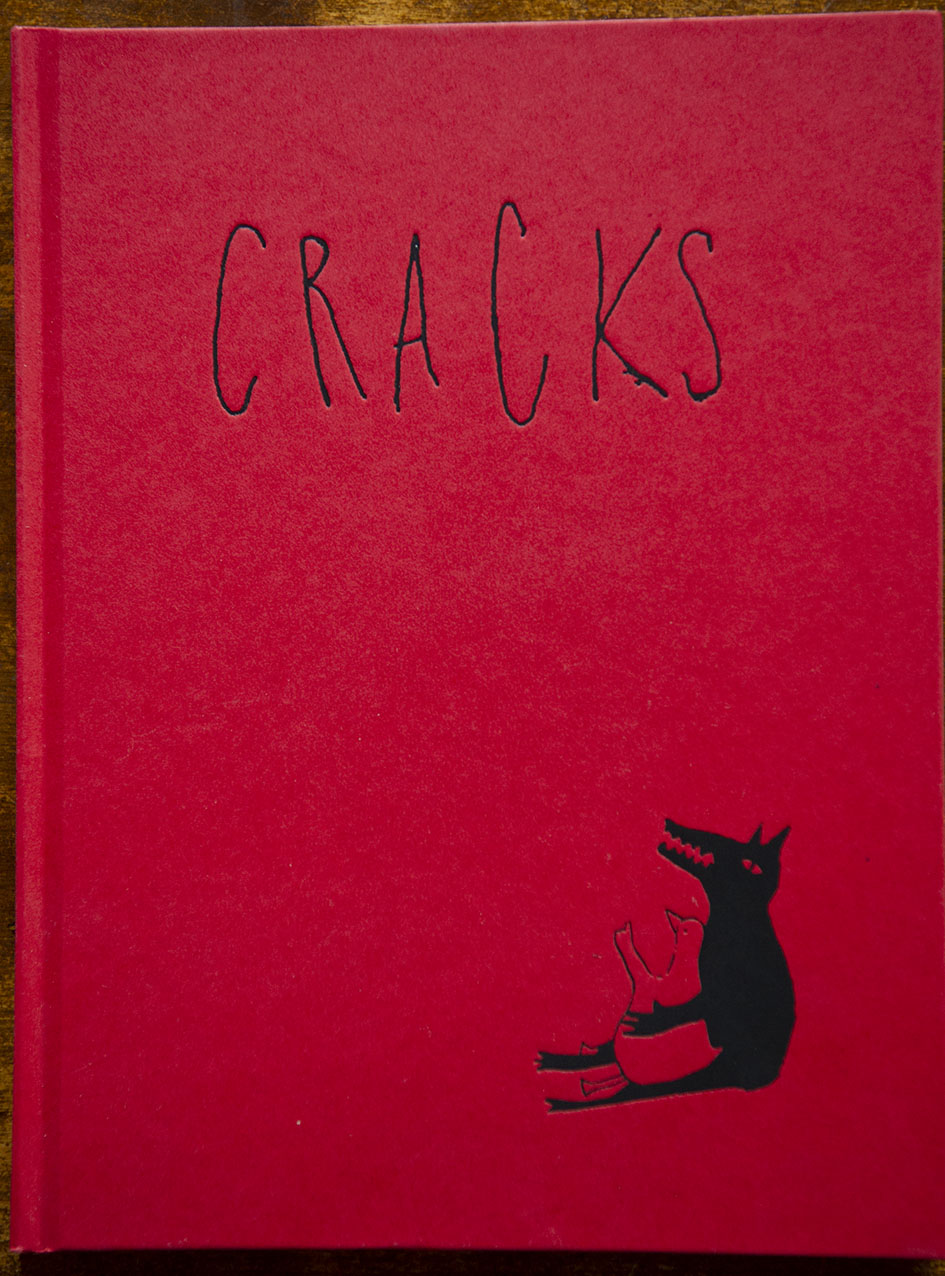
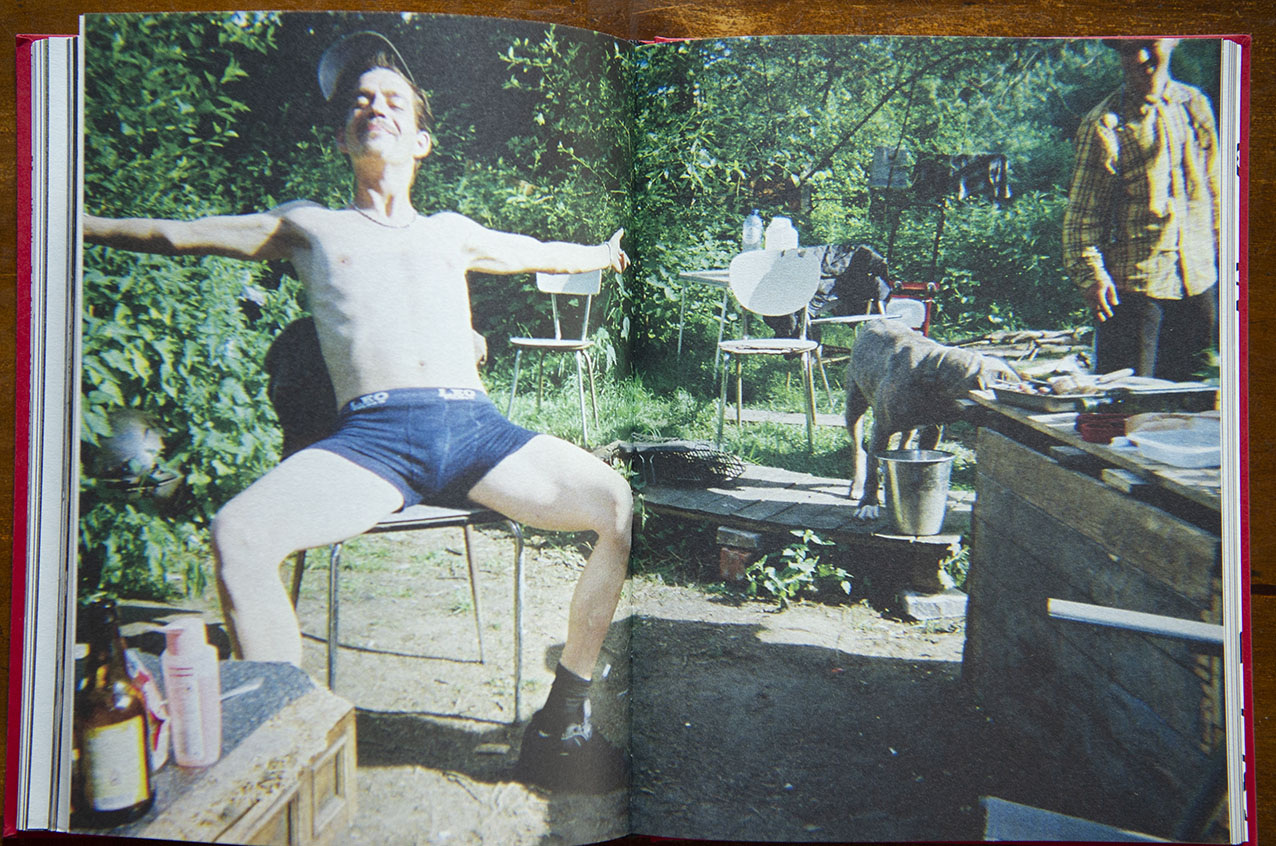



Espinho, published in 2021 by Intimate structures, is a piece of work made in the fishing community of Espinho, a borough in the South of Porto. For this work, photography was, for Vincen, a way to communicate with people, as he does not speak Portugese and the local people don’t speak French nor English. From 2016, he returned time after time to finally staged an exhibition, glued on the wall of the borough. From his own word, this book is like a family album.





Les Eternels was published in 500 copies by Ciao Press, in 2021. The photographs were made in different nursing house of elderly people, in collaboration with “A travers les arts”, an association to promote the access to culture for elderly people. The book interweaves photos of the present daily life with archives photos or press clippings creating a very joyful mix.






Birds of a feather, OpStap, the last one in my collection, is a collaborative project between Vincen for the photos, Colin Pantall for the text and Lien Van Leemput for the design, published in 2021 by APE in an edition of 1000 copies. The book focus on the organization and functioning of OpStap, a structure which aim is to help people with drug addictions.
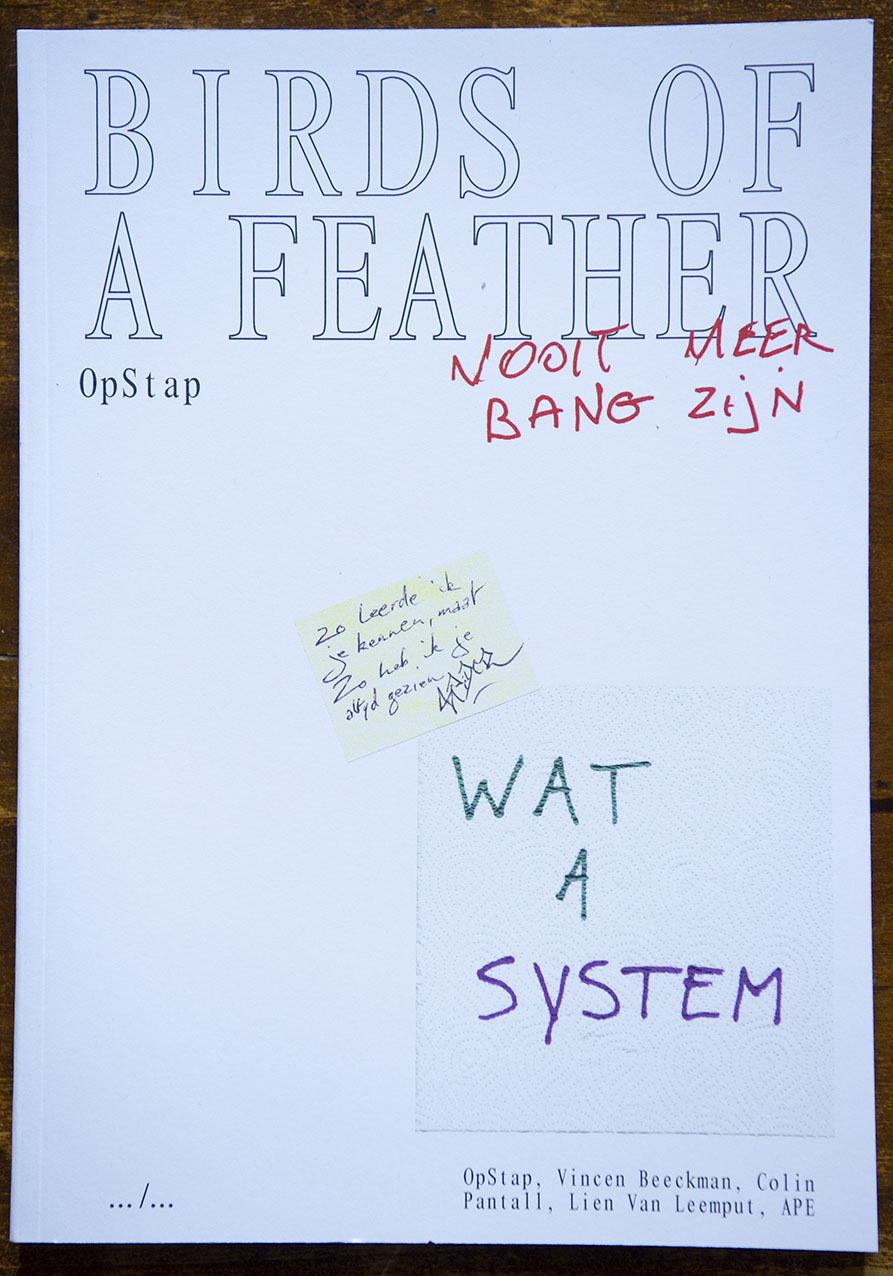




To conclude, I could nothing but recommend you to have a look at those books if you can put your hands on them. Words are powerless to describe the feelings you have when you let Vincen takes you by hand to guide you to meet all those fantastic people. And I must admit that in the ambient gloom, these books give me faith in the future of human beings.
Happy/Brooklyn 1988-93 by Nina Korhonen
Posted: May 30, 2019 Filed under: Photobooks, Photography | Tags: Conet Island, Etats Unis, Finlande, Finnish photography, Finntown, Happy Brooklyn, New York, Nina Korhonen, Sweden, Tira books Leave a commentOr the tribulations of a Finnish girl in New York …
Apart from the Native Americans, the United States are almost exclusively inhabited by descendants of migrants. The waves followed one another according to the European temporalities (starvation, religious reforms …), the Finnish community in New York was mainly established during the first half of the 20th century, settling notably in Brooklyn.
In 1988, Nina Korhonen was studying photography in Stockholm, when she begin visiting her grandmother in New York. She wants to document the history of this community ; she takes pictures, speak with people, listen to their stories with empathy, to understand a part of the story she comes from.
We are dealing here with a slow photography, close to the subjects. Nina lives among this community ; on weekends she goes to Coney Island which becomes, at the same time a public space, an agora and a playground. People walk there, meet there, or show up, sometimes in poses that could be ridiculous if they were not there to remind us that a society is permanently a game of seduction in our relationship to others.
There is also a lot of privacy in this photographic work, when the night comes, the lights fade and the interiors light up, whether in a kitchen or when the sound of The Laiho Brothers with their accordions starts to be heard in the ballroom. Choreography at the scale of a neighborhood in which everyone will find his place. However, Nina does not forget the decor in which the scene is played, the subway, the street, the water, the beach, this impression of déjà vu cinematographic. We can easily imagine Matti Pellonpää and Kati Outinen, after having emigrated to the United States, finding themselves, at the sound of the accordion, in a dialogue straight out of a Kaurismäki film. We also think of this other story of Hungarian migrants in “Stranger than paradise” by Jim Jarmusch. But we also find the fascination for people, caught in the simplicity, even the naivety of their daily life which impregnated “The Americans” by Robert Frank.
Nina Korhonen work is refreshing in a photographic world that has now moved, sometimes with excess, into a conceptual environment. Here we just share moments of daily life, which tell a story written in the past, but strongly rooted in the present and which leaves us with the impression of having spent a few days with friends… and back again, the tune of the accordion that still resonates in our head.
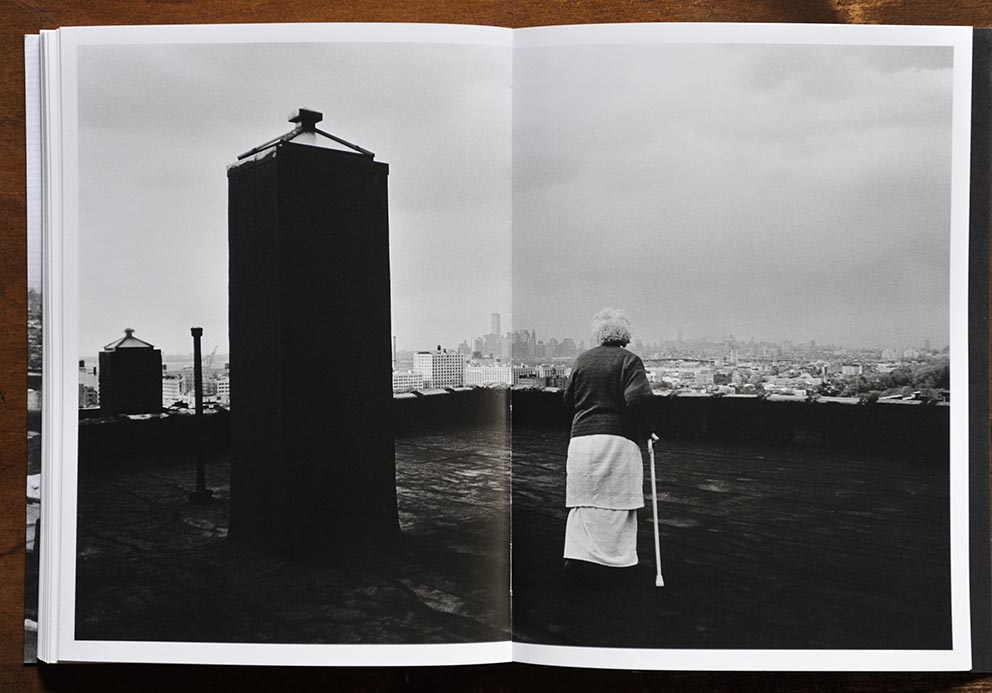
Night falls on Brooklyn now. Tomorrow, if the weather is nice, we will go to the beach…
——————–
Happy/Brooklyn 1988-93, softcover published by Tira Books, a new Swedish publishing house, in 2019. 19,5 x 26 cm. 128 pages. Print run 700 copies.
More info :
The Facebook page of Tira Books : https://www.facebook.com/pg/Tira-books-642051976239560
The site of Nina Korhonen : http://www.ninakorhonen.com/
Another review in French by Fabien Ribery : https://lintervalle.blog/2019/05/22/brooklyn-a-largentique-par-nina-korhonen-photographe/
Beware of the dog by Alex Llovet
Posted: February 26, 2019 Filed under: Photobooks, Photography | Tags: Alex Llovet, Beware of the dog, childhood, Ediciones posibles, Fear, Growing, Spanish photography Leave a commentWith the growing number of small publishing houses, photo books are flooding the market with, sometimes, very innovative forms. However, an innovative form does not make a quality book, but what we can see with the evolution of the world of the photo book, is that a kind of cleavage is appearing in photography between an exhibition of prints and a narration proposed in a book form. The book has become an object by itself, and sometimes the photographer’s work truly finds an end in the book object.
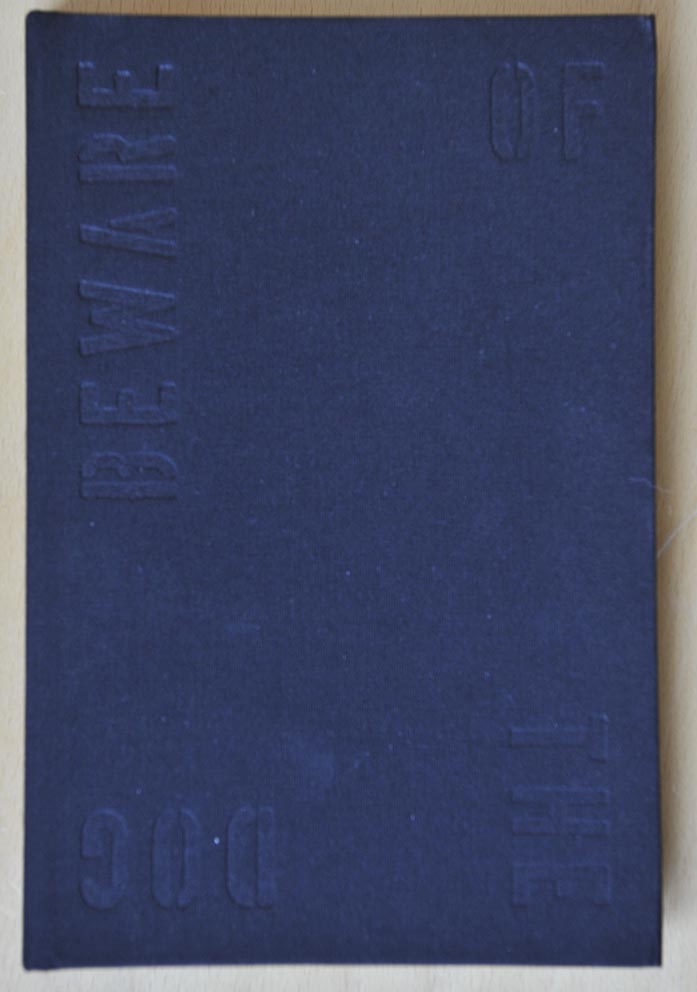
At first glance, Alex Llovet’s book surprises us. His title is barely readable, in black-on-black and written in a rotating manner, intriguing and prevalling from the outset a certain caution on what we will find, meet, cross in the book.
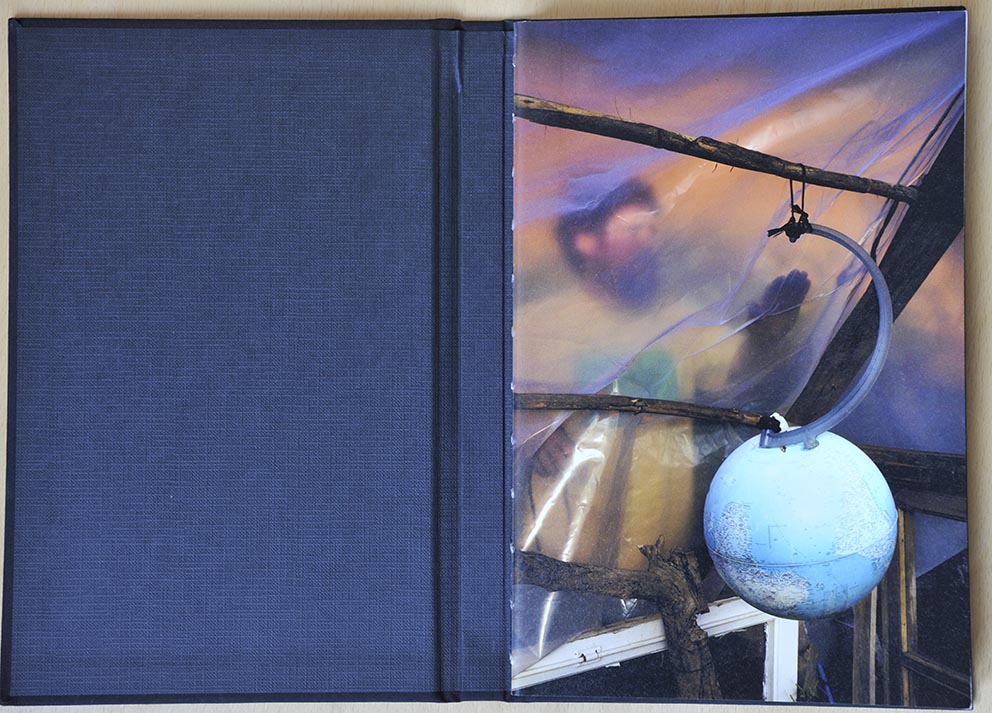
The book opens with a full-page image, as will be found throughout the book. A man, behind a plastic tarpaulin, seems to observe, from afar, behind a curtain, a world, or more precisely a broken-down world map, which, according to our ethno-centric representations, has its head down ! As if to tell us that we have to be ready to change all our preconceptions and let the world surprise us without any fear of what will be next. The title will not be repeated as often expected and, once the first page is turned, we discover a double blank page with two inscriptions, head to tail, in English and Spanish « no one » and « nadie ». Then begins a long journey made of sequences.
The first sequence of images is upside down and you have to turn the book to look at them, although there is some curiosity to look them upside down, as if to find a hidden meaning or to leave our unconscious speaking (and thus some signs appear). It’s all the more strange that, now, in order to advance in the book, we have to turn the pages as if to go backwards… until we discover a new double page with, again, inverted texts, which seem to progress « no one leaves ». A new sequence appears, asking again to resume the classic reading of the book. The last assertion will deliver us finally, not an answer, but rather a key of reading « no one leaves childhood unsattled » and in Spanish « nadie sale de la infancia ileso ». The progression is done by trial and error, between fear and joy, amazement and hope… And thus we walk beside the photographer.
The photos plunge us into the dream world of childhood. We meet children who grown up in a rural world and who cross this universe of fear, fascination and excitement. Beware of the dog tells us about fears, those we feel when we are children, those we feel when we are adults, those we feel when we are parents, in short, those that we feel through all ages of life, but have the consistency of reality making us alive. Alex’s book brings no more answers than he asks questions, he simply and gently poses moments that he gives us to contemplate. The book is elliptical, both in its sequences and in its entirety, once finished, just return it to resume the course of the story, for a moment stopped.
All the strength of this work finds here its perfect form. The images of everyday life, of the author’s daughters, to whom the book is finally dedicated and which we have been able to glimpse, refer to other images that have remained in our memory. The images, individually, are beautifully crafted, but, put end to end, side by side, forward, backward, it allows us to enter the intimacy of Alex Llovet. Not in a voyeuristic intimacy that would not interest us, but rather closer to the feelings, and then “Beware of the dog” is not so scary, we are warned and then we become attentive…
After the book « Faraway so close », « Beware of the dog » could be considered as the chapter two of « being a father » author’s own questionning.
Hardcover book published in an edition of 225 copies by Ediciones Posibles. 16,5 x 25 cm. 116 pages and 66 color photographs.
More info : https://www.edicionesposibles.com/product-page/beware-of-the-dog
And : https://www.alexllovet.com/Beware-Of-The-Dog
Subterranean river, by Łukasz Rusznica
Posted: January 5, 2019 Filed under: Photobooks, Photography | Tags: Japan, Subterranean river, Łukasz Rusznica Leave a commentLet’s take advantage of the beginning of the year to come back to a very beautiful book published last year, which, if it had not already been mentioned by others, would surely have appeared on my end-of-year list.
Making a photobook has become a pretty easy thing nowadays. As anyone in this little world, I can only admit that I am submerged every day under new announcements, new requests for crowdfunding campaigns, pre-purchase, and I do not complain, however, it becomes more and more difficult to detect works that stand out and surprise us. Making a book nowadays is no longer simply adding page after page of good quality images, but it’s much more about sharing an experience, told through a series of photographs, sketching a narrative in which the reader will be snapped up and whose he will only come out changed.
Well, Subterranean river is this kind of book, a one in which I enter with caution, a one which I sees to understand without going straight to the explanations of the author. Whether it’s a photobook, a novel or an essay, I never read the preface before entering the book, I do not want to know what I have to wait for and I prefer to stray on side roads to to fully live my own journey. So obviously, the book of Łukasz surprised me completely as much as it confused me. As a symbol, the first image shows us a nature in disorder, as a way of telling us that what is going to follow is no longer commonplace, so it only remains for us to let be taken in charge. The color images are very strong, we look for a meaning, we detect traces. Other images printed on a very fine paper come punctuate the narration, like telling us another song.
And suddenly, these two songs come into resonance as we discover a new series of photographs printed on red pages, characters, as ghosts appear in baroque compositions. Within this complicated nature, we finally crossed paths and established a communication. The book seems to be a spiritual research in the meaning of what Kandinsky said in his book « On the spiritual in art » about the different relationships between movement, form and color, in the artistic practice.
In a text, at the end of the book, Olga Drenda reveals part of the mystery and explains the quest Łukasz has made across Japan. We are here dealing with a spiritual journey, no anecdotes about the Japanese society, no sort of Orientalism as we have known for centuries. This trip could have taken place in other places, but if Łukasz chose Japan, it is, as he explains, because « When travelling to Japan, I knew one thing only — I wanted to take pictures based on Japanese mythology; I wanted to photograph the Yokai — the monsters of legend. Photography came as the result of working in new surroundings; it was the end process of meeting people and building relationships — this is surely why so many of the pictures (and the intimate ones in particular) are of my friends or the people who trusted me — of humane people. The non-human world is more than a background or visual filler; it is of equal importance. I understood that what interested me most here was nature. Man is a part of it… ».
It only remained for him to let be guided … and for us to do the same …
Harcover book published by Fundacja Sztuk Wizualnych / Palm* Studio in 2018. 23.5 x 31 cm, 120 pages. Print run : 500 copies
More info : https://palmstudios.co.uk/product/subterranean-river/
For your consideration, in my humble opinion – some books from 2018 !
Posted: December 29, 2018 Filed under: Photobooks, Photography | Tags: 2018, America revised, Christopher de Bethune, Fables of faubus, Fifty High Seasons, Gerry Johansson, John Myers, La Zone, Le fleuve Somme, Lena C. Emery, Looking at the overlooked, Orbit, Paul Reas, photobooks, Race with the devis, Rein Jelle Terpstra, RenatoD'Agostin, RFK funeral train, rites of mirrow hidden gravity, Sergej Vutuc, Shane Lynam, Stone kingdom, The people's view, Thibaut Cuisset, Touch, Yan Morvan, Yuka and the forets Leave a commentFirst of all, let me be clear, this is not a best of list of 2018 ! If you want to know the best books published this year, you can refer to the very well done compilation by Viory Schellekens caled the meta list. Here is the link : https://www.facebook.com/Viory.Schellekens/photos/a.1894706323931695/1907864862615841/?type=3&theater
I have to confess that all those lists are no surprise, Raymond Meeks, Mark Steinmetz, Matthew Genitempo, Carmen Winant, Laia Abril and you can go on… of course they are the best books of 2018. Just consider the meta list and you’ll get the best books published this year (236 list makers…), nothing else to say. So I was wondering, what is the point to post another list. For the last few years, I did what I called a “los olvidados” list (yep that’s a reference to Bunuel), but this year, it is not a forgotten list, but rather a question : why those books have not been mentionned so far. I only choose books which not appear in the meta list (two mention to appear), so if Viory includes my list, maybe some will appear and gain a rank…
Let’s start with no order neither priority and I wish you all a happy new year full of great discoveries in 2019 :
Race with the devil by Yan Morvan, published by Serious publishing
Yan Morvan spent years with motobike gangs, even putting his life in danger, this work is unbelievable for me in consideration of immersion to get good photos. Ans he remains not that known worldwide. I also though about another great book from Yan published this year : Bobby Sands with André Frère.
Le fleuve Somme by Thibaut Cuisset published by Diaphane Editions
Still don’t understand why this wonderful photographer remains unknown. The slow melancholy of his landscapes deserves a wider eccho, maybe if Steidl finally publishes his “French Landscapes” next year !
Looking at the overlooked by John Myers, published by RRB Photobooks
Probabaly one of my actual favorite photographer. For those who know my work you may understand why. And finally a great book (with his previous one “Portraits”) which gives justice to his work. Well technically, this one is supposed to be published in 1019, but I already received it, so…
America revised by Gerry Johansson, published by Only Photography
Gerry is one of my absolute favorite photographer and his book American winter has already been mentionned profusely, but… If American winter is another great book, it is just another one in his series of cities books. This one brings in light his very marginal color work which is gorgeous, but also a larger size printed view of his photographs in the size of his original prints, and everything perfectly done as Roland Angst knows to do.
Fifty High Seasons by Shane Lynam, selfpublished
A wonderful testimony of what has become one of the most incredible touristic and land planning experience of the XXth century. Planification to create from nothing one of the biggest French touristic area. A gret discovery for me, including what was called the Mission Racine planned by the DATAR.
Fables of Faubus by Paul Reas, published by Ghost books
We all know Martin Parr’s work, but Paul Reas has been long ago working on the same topics, and finally a book which gave him justice : a dive through the English society with reality, humor, sadness and colorful…
Stone Kingdom by Christopher de Bethune, published by Le Mulet
I am a total fan of Christopher’s work. There is so much poetry in the way he looks at things. You just need to hold one of his book in your hands to be converted… Unfortunately only 60 copies.
Touch, Rites of Mirrow Hidden Gravity by Sergej Vutuc, selfpublished
Time after time Sergej still surprises me with new experiments and renewal. He turns reality into abstractions and kind of mental images of the world that surrounds us. Handmade books after books they are more and more fantastic ! 100 copies only.
Robert F. Kennedy Funeral Train – The People’s View by Rein Jelle Terpstra, published bu Fw:Books
I have always loved Paul Fusco’s idea of taking pictures from the funeral train of Bobby Kennedy showing America in 1968. Rein jelle Terpstra investigates the way that was followed by the train to find pictures made by people standing by the passing of the train. Some brilliant reverse shots which complete the original story and tell a lot about the moment.
Orbit by Renato D’Agostin, published by IKKI
IKKI edtions initiated a few years ago a collaboration between photographers and musicians. Every book is a journey of the photographer to accompany a specifical music, this one comes with a composition by Scott Worthington. You can turn the page listening to the music, or vice versa. So far two sets of three books and records have been published.
Yuka and the forest by Lena C. Emery, published by APE
A slow meditation about a girl and a forest, beautifully printed and a touching story if you make yourself available to it.
La Zone, published by gallery Lumière des Roses
A catalog of an exhibition held in Montreuil at gallery “Lumières des roses” with numerous photos of the former suburbs of Paris. A piece of history about contemporary urbanisation of cities.
Look I’m wearing all the colours, by Rikard Österlund
Posted: November 4, 2018 Filed under: Photobooks, Photography | Tags: England, Look I'm wearing all the colours, Rikard Österlund, selfpublished, Sweden, Zara Leave a commentRikard was born in Sweden and settled in England years ago. In 2005, he met Zara and they’ve been living together until now. This is the story that Rikard Österlund tells us in this very touching book.
But wait, another point of importance in this story, is that Zara suffers from fibromyalgia, hypermobility syndrome, obsessive compulsive disorder and anxiety. This disease is difficult to diagnose, but most importantly, the only treatment is to manage the effects of the disease. When affected, you really have to live with it and Rikard and Zara share this together since the beginning of their relationship. The fact that this disease was known from the beginning of their relationship makes the story more touching and, as Rikard says, they have learnt to live this like a third person in our relationship.
One of the great qualities of this book is that it opens the doors to the intimacy of the couple. But here, the term intimacy has to be read in term of love, not in terme of voyeurism, a bit like if Rikard was afraid to see disappear all these shared moments. The context is set in the preamble of the book, the title is also explained, since it is a sentence that Zara sometimes pronounces when entering the office of Rikard : Look I’m wearing all the colours. The use of colour in the book is not neutral, the story of the couple is an explosion of colours, whether shared moments or as Zara is dressed. But the book is also punctuated with black and white photographs, and it tells a kind of parallel history, like the presence of the unconscious, as for magnified moments, imprecise memories that in the remnant of moments of pain testify a need for the spirit to escape, to wander, to regain strength.
As a result, we quickly feel a great empathy for Zara and Rikard. This form of intimacy does not hide the reality of everyday life, despite the explosion of colors, difficult moments emerge between pages of joy. The suffering of one becomes that of the other and, over this reading, it is also our own.
The book is a long poem dedicated to Zara and its layout uses lots of metaphors, it opens on a blue sky on which clouds are appearing, themselves tainted with warm colors, then, we discover a swan, alone, as in the looking for his partner (we know that swans can stay in couples all their lives), and then, Zara’s face appears behind a window fogged, imprecise and immaterial before seeming to wake up on the next page.
Are we diving into a dream or are we coming out of it? Much more than a book on Zara, this book is a book about Rikard’s love for Zara, whom he compares to a Madonna on a double page with a sweet and tender portrait on the left and a statue on the right. He shows us all his feelings, from doubts to joy or pain, like on this double page with on one side a hospital corridor (no way out) and on the opposite page the shadow profile of Rikard interpreted as we can assume as doubts and fears for the future.
The book ends softly with the beautiful picture of Zara, finally appeased and full of hope, who hands him a flower picked in the garden nearby, and seems to say : do not worry, everything will be fine! And so, we are also a little convinced that, yes, everything will be fine!
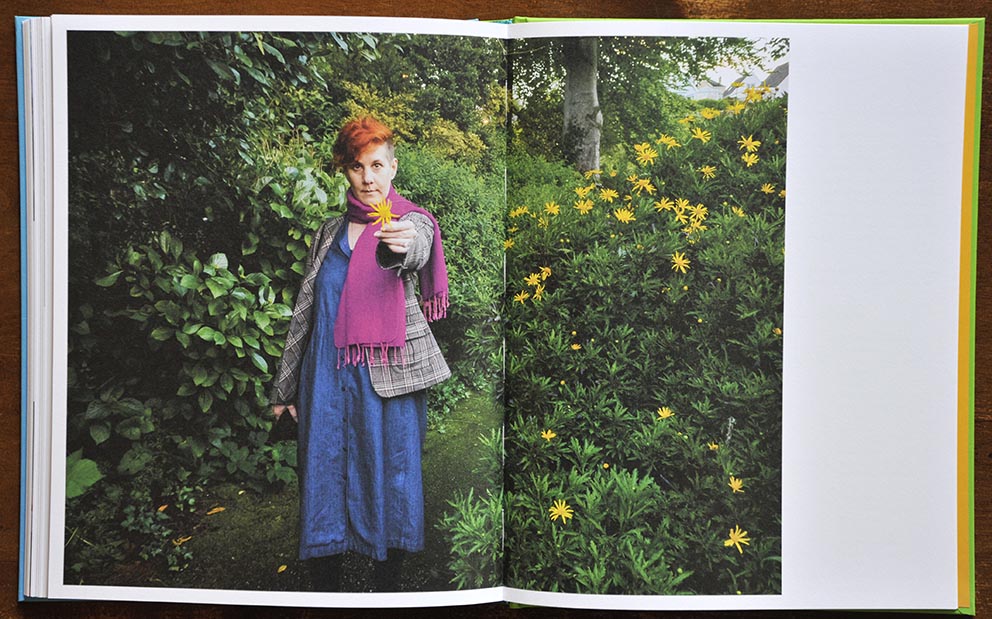
Hardcover book selfpublished in 2018. 120 pages with 90 colour and black and white photographs. Edition of 500 copies.
More info : https://www.rikard.co.uk/allthecolours
Familiar places by Ovidiu Gordan
Posted: September 9, 2018 Filed under: Photobooks, Photography | Tags: Dacia, Familiar places, Georges Perec, Ovidiu Gordan, Romanian photography, selfpublish Leave a commentThe old-fashioned charm of post communist Romania is the first impression we feel with this book of photographs taken between 2007 and 2017, by Ovidiu Gordan. A bit like the feeling of going to see a friend who takes us through the streets and alleys of his village, then to the countryside.
As familiar as these places are, they are none the less singular. Ovidiu, with his camera, meticulously notes everything he meets and « finds ». He guides us through his country with a certain pride. He tells us his memories, the table of a restaurant he frequents, the cat he often meets on his daily journey and tries in vain to approach. Without knowing Romania, we can let ourselves be carried away by the narrative, this book tells us stories, it leaves priority to in our imagination, like this old Dacia, a copy of the French Renault 12 owned by a person who was dear to us… what has become of her?
We see nothing of the country, or perhaps, on the contrary, we really see it, in the sense of understanding it. No postcards or clichés, the photographs follow the rhythm of our wanderings. When a couple passes by, Ovidiu whispered to us the singular story of these two people. Old photos on the wall, hanged on a decayed wallpaper tell the story of a time when Romania was under the yoke of Ceausescu couple. The photos alternate scenes of incredible precision, as frozen timeless, and other moments vaporous, bathed in blur and fog. Things do not come out spontaneously, you have to make yourself available, give them attention, to find their preciousness. We meet people too, of course, some people who we dare to approach and others we do not want to disturb.
Time passes and we have to leave this friend. The book goes on and familiarity sets in, and becomes our own. We recognize signs, the local culture permeates us, a woman, met on the road, smiles, we are no longer strangers.
The book is endearing in many ways. The principal is certainly the generosity that he transmits which remains in us, after having traveled through those « Familiar places ». There is a need in Ovidiu to seize these moments, to tell their reality, as if we need to be convinced of our own existence. Capturing these little non-events, this collection of little things that we collect every day to keep them preciously in a notebook of memories, until we meet them again, a bit like the book « I remember » by Georges Perec that he presented as: « small pieces of daily life, things that, a year or another, all people of the same age have seen, lived, shared, and which then disappeared, have been forgotten; they were not worthy of being part of history, nor of being included in Memoirs of statesmen, mountaineers, and sacred monsters. Sometimes, however, they come back, a few years later, intact and tiny, by chance or because they have been looked for, one night, with friends. »
Hardcover book selfpublished in 2018. 23 x 23 cm.,108 pages with 52 black and white and color photographs.
More info : https://www.ovidiugordan.com/
Dark cities, by Shyue Woon
Posted: August 3, 2018 Filed under: Photobooks, Photography | Tags: Architecture, Asian photography, Capsule, Carpark, Dark cities, Euljiro, Ginza, Nakagin, selfpublished, Seoul, Shyue Woon, Singapore, Tokyo Leave a commentThe subtitle of the book could have been, « A tale of a forgotten future » as Shyue Woon takes us to a long journey exploring some emblematic areas in three huge cities : Singapore, Tokyo and Seoul.
Each of these cities is the object of an autonomous work, the three being collected in a superb box that gives its name to the trilogy. Shyue Woon is a trained architect and an architectural approach is evident in the way he looks at the places he passes through. He takes us with him in his wanderings, as if to make us visit the recesses of his unconscious. Of the three megacities chosen, he shows us almost nothing, or very little. In each city, he chose to isolate himself, at night in places that were, at other times, symbols of a prosperous future, utopias of the twentieth century.
The first book is entitled « Carpark » and Shyue Woon takes us for a night walk in a multi-storey carpark. I have always had a particular affection for the nooks and « non-places », well… all those places in front of which one passes without ever stopping or even taking a look at it. A succession of details slowly builds an abstract vision of this world of the night. Our imagination creates a parallel universe in which memories reappears. A silhouette draws itself in distance, or is it a ghost? We meet people whom we can’t reach, separated from a window or a blur that prevents us to get in touch.
Shyue Woon evokes the idea of a purgatory in which one evolves, trying to solve a crime story, reference to the black films or an insoluble enigma coming straigh from mythology, which proves impossible to solve. We meet our demons but we also get rid of our fears in a cathartic ordeal.
The second book entitled « Capsule » takes us, as its title indicates in the Nakagin Capsule Tower in Ginza – Tokyo, futuristic project of the early 1970s which today, is on the brink of abandonment since the maintenance there is no more assured. Shyue Woon guides us through this labyrinth of doors and corridors. The light is more present, as if, out of purgatory we found our way to the surface, to the inhabited world. We get lost in this maze of colors to always end up in front of a wall, but with the hope of a light that will deliver the outcome.
Here again the author stops on small things, trivial details that say long about the state of the premises. We find ourselves locked in the past, as in the brain of a brilliant architect who would find himself trapped in his project too futuristic, and here the term capsule takes all its meaning, recalling the films of anticipation in which the deplacements were supposed to be done in some so-called capsules.
« Euljiro », third opus of this trilogy leads us finally in a district of Seoul. It is always dark and our wanderings continue in this dehumanized world. Lights seem to illuminate a vanished world, or at least of which the inhabitants would have leaved places in a sort of hurry. Cables guide us through the streets, like a ball from which we pull the wire to guide us to the exit, ponctuating our way of many traces of life, proof that we are on the right path. The light returns slowly, passing from the structuring spheres of the city to its surface state. If the first book was purgatory, we wonder now in what universe we will emerge.
The three books highlight Shyue Woon’s vision of the city, which is reminiscent of Marc Augé’s definition of « non-place » (one of the texts accompanying « Carpark » refers to it) and the architect he is can only wonder about the spatial organization of the city and the spaces that compose it. How do we go from one place to another, spatially first, but also temporally and here is appearing in the background of the three books, the influence of time on the « project ». Would the futurism of an era become now only old fashionned and, finally, what is this articulation of the present that tilts one towards the other? It is thus as an architect that Shyu Woon uses the night to deconstruct what was built, in order to understand the inner structure of buildings and cities, and to reorganize the spaces around a fiction stemming from our imagination, a little bit as Alice’s world by Lewis Caroll.
Three hardcover books 14,5 x 21 cm, open spine with silkscreen cover, in a box set.
More info : http://shyuewoon.com/
Where are we now ? by Geert Van Den Eede
Posted: May 22, 2018 Filed under: Photobooks, Photography | Tags: Balkans, Belgian photography, Belgium, Cape of Good Hope, David Nollet, Geert Van Den Eede, Ognjen Lopušina Leave a commentCape of Good Hope was first a photobook blog by David Nollet. It became an independent publishing house when David published his own book entitled « Façade Démocratique » in 2016. Two years later Cape of Good Hope offers us a new book whose poetry is reminiscent of the previous one.
Geert Van Den Eede is a Belgian photographer who brings us, throughout this book, in the Balkans. The photographs were taken from 2007 to 2015 in Romania, Bulgaria, Macedonia, Albania, Kosovo, Bosnia and Herzegovina, Serbia and Montenegro. The title of the book refers, as much, to the state of this fragmented, disputed, broken territory, as to the photography itself and its own question of representation. Where are we now? of these borders, lines and continually changing patterns that have fueled all fantasies and generated so many dramas for centuries. Where are we now? of this ability to represent with the photography medium. In the foreword, Ognjen Lopušina compares these two statements with the Sisyphus ordeal, finally condemned to continually climb a rock at the top of the mountain without ever succeeding, so Where are we now?
Usually, I do not read the foreword of a book before seeing the pictures, I do not want to condition my perception by the considerations of another. Yet this time I did it, without really knowing why, so I already know a little what I’m going to find, especially since this text is a kind of caption of the photo on the cover: a structure of concrete terraces whose we do not know if it is a finished work, a work in progress, or a demolition site; a kind of perpetual movement which, like this country, never stops to reshape itself, to redraw itself, moving back and forward. So, actually, the photographic representation becomes a challenge. How by its immediacy could it show these turbulences, these movements, sometimes so subtle that a foreign eye would not succeed in discerning them.
So we turn the pages and move on to the book. Very quickly, we are touched by these ephemeral moments that get entangled. We walk with the photographer, we stop for a moment, then we resume the journey. We meet a few people, some suspicious, others distant and, everywhere, traces where an uncertain future stands alongside the tortured past. Geert Van Den Eede describes his work as a travelogue, a sort of wandering across the Balkans, with no purpose nor goal than to record everything that crosses his path, to try to understand this territory and its figures … and the form is successful. The layout is sober and a certain poetry emerges from these places that are not at first very attractive. They become touching or even fragile, even if they are embedded in concrete structures. Each image is rich and the frame filled. We stop and the drama begins, the actors are in place, the acts follow each other and are not alike, or maybe they are, since we read harmonics that hold the piece all along, which gives it its coherence. Each of these bits of history would be a pretext for a novel, point of departure or arrival of a story that would be built in the background.
Concrete is very present throughout the book, it give rythm to the sequences and punctuates the spaces, both public and private. It is subject, becomes scenery, sometimes disappears in rural areas to reappear further. It is the leitmotif of this country, a promise of a modernity to come which is already fading by turning to new futures, like this cosmonaut with the colors of America and its neoliberalism devastating trend. There remains, however, a certain grace in these modernist abstractions, but perhaps it is the same kind of grace that can be found in the photographs « underexposed on an expired 3200 ASA film from a forgotten East German stock », to quote Ognjen Lopušina.
So, I really do not know Where are we now? but with a certain humility, I got to know this country better now, and that’s not bad! Thanks to Geert Van Den Eede and Cape of Good Hope.
Softcover book published by Cape of Good Hope in 2018. 24 x 30 cm, 56 pages and 31 B&W photos. Essay by Ognjen Lopušina
More info : http://www.cape.ag/
And : http://www.geertvandeneede.be/where-are-we-now/
The link for my previous review of Façade démocratique : https://whoneedsanotherphotoblog.wordpress.com/2016/05/16/facade-democratique-by-david-nollet/












































































































































































